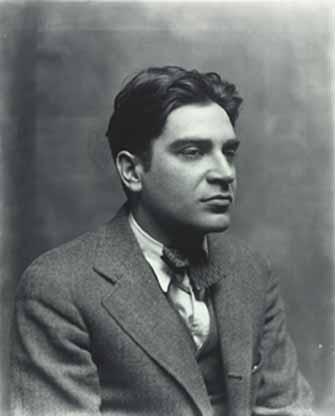Birth of Reuben Nakian (August 10, 1897)

The obituary of The New York Times regarded Reuben Nakian as “one of the most distinguished American sculptors of the 20th century.” Born on August 10, 1897, in College Point, New York, to an Armenian family, Nakian studied at the Independent School of Art in New York City as well as the Robert Henri School. Later, he studied at the Art Students League of New York. In the 1930s he was commissioned to create portraits of President Franklin Delano Roosevelt’s cabinet. He met and befriended painters Arshile Gorky in 1931 and Willem de Kooning around the same time, and Marsden Hartley and Marcel Duchamp in the 1940s.
Nakian taught at the Newark School of Fine and Industrial Arts (1946-1951), and then once a week at the Pratt Institute in Brooklyn (1952-1956).
His works had Greek and Roman mythology as their main source of inspiration. Noted works include Leda and the Swan, The Rape of Lucrece, Hecuba, and The Birth of Venus. He enjoyed a long and renowned career, maintaining his innovative spirit and creativity during his entirely life. He constantly revised his modes of expression and explored new media: marble, clay, plaster, metal, paper, and, in his last years, styrofoam.
His work is represented in the permanent collections and sculpture gardens of many of America’s most prestigious museums and institutions. He held major solo exhibits at the Los Angeles County Museum (1962); the New York Museum of Modern Art (1966), where he had been exhibited in the “33 Modernists” show in 1930; the Hirshhorn Museum in Washington, DC (1981); the Milwaukee Art Museum (1985), the Gulbenkian Centro de Arte Moderna in (Lisbon,1988), among others. Some of his monumental works preside over civic and private settings across the United States. His sculpture “Descent from the Cross” (1972) is a memorial of the genocide installed at the St. Vartan Plaza in New York.
Nakian was elected a member of the National Institute of Art and Letters in 1973. He received honorary doctorates from the Universities of Nebraska and Bridgeport, medals from the Philadelphia College of Art and the American Academy and Institute of Arts and Letters, and awards from the Connecticut Commission on the Arts, Brandeis University, and Rhode Island School of Design, among other distinctions. He was a guest of honor at the Famous Artist’s Evening at the White House, and in 1985 the Smithsonian Institution produced Reuben Nakian: Apprentice to the Gods, a documentary on his life and work. He was awarded a Guggenheim Fellowship (1931) and a Ford Foundation Fellowship (1958), and he was the major sculptor representing the United States in the VI Bienal in São Paulo, Brazil (1961) and the 1968 Biennale in Venice, Italy.
Reuben Nakian died on December 4, 1986, in Stamford, Connecticut, at the age of eighty-nine. The Reading Public Museum and the Corcoran Gallery of Art, Washington, D.C., where Nakian had his first solo museum exhibition in 1935, held a retrospective in 1999.

